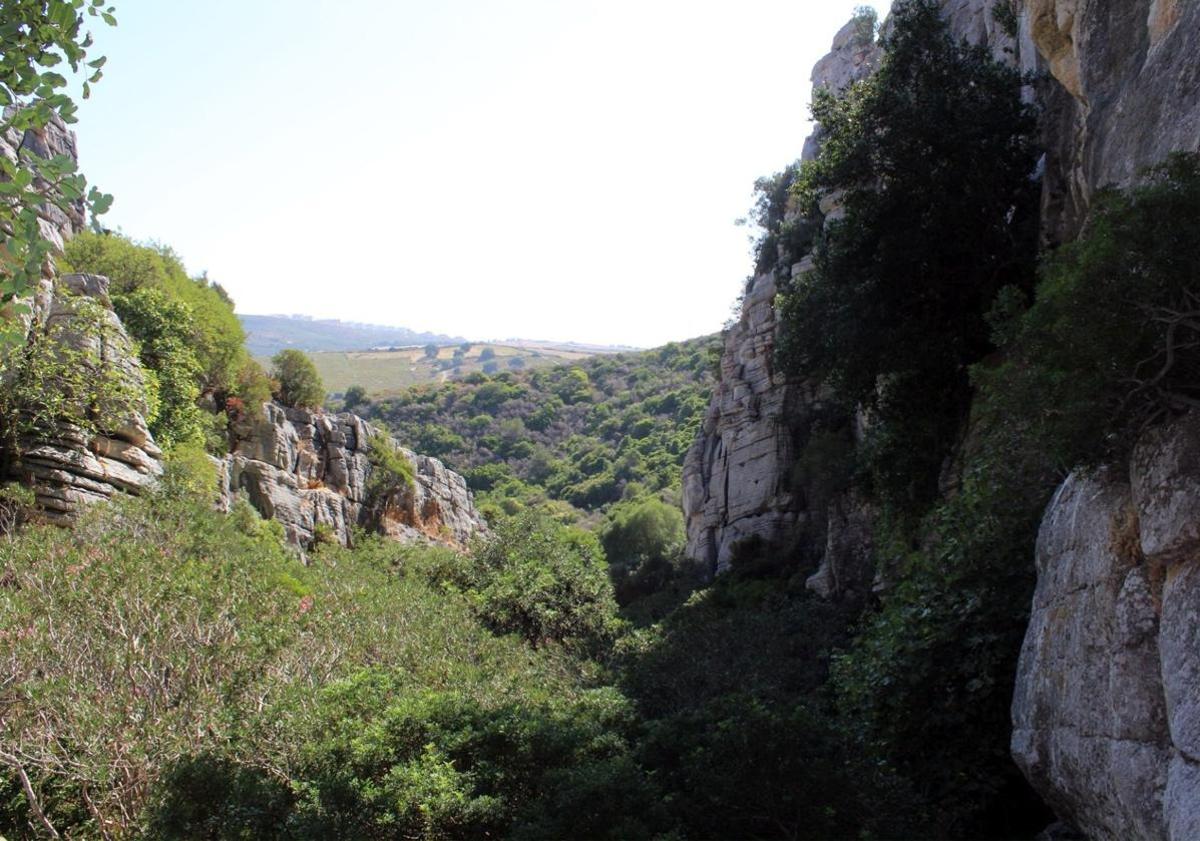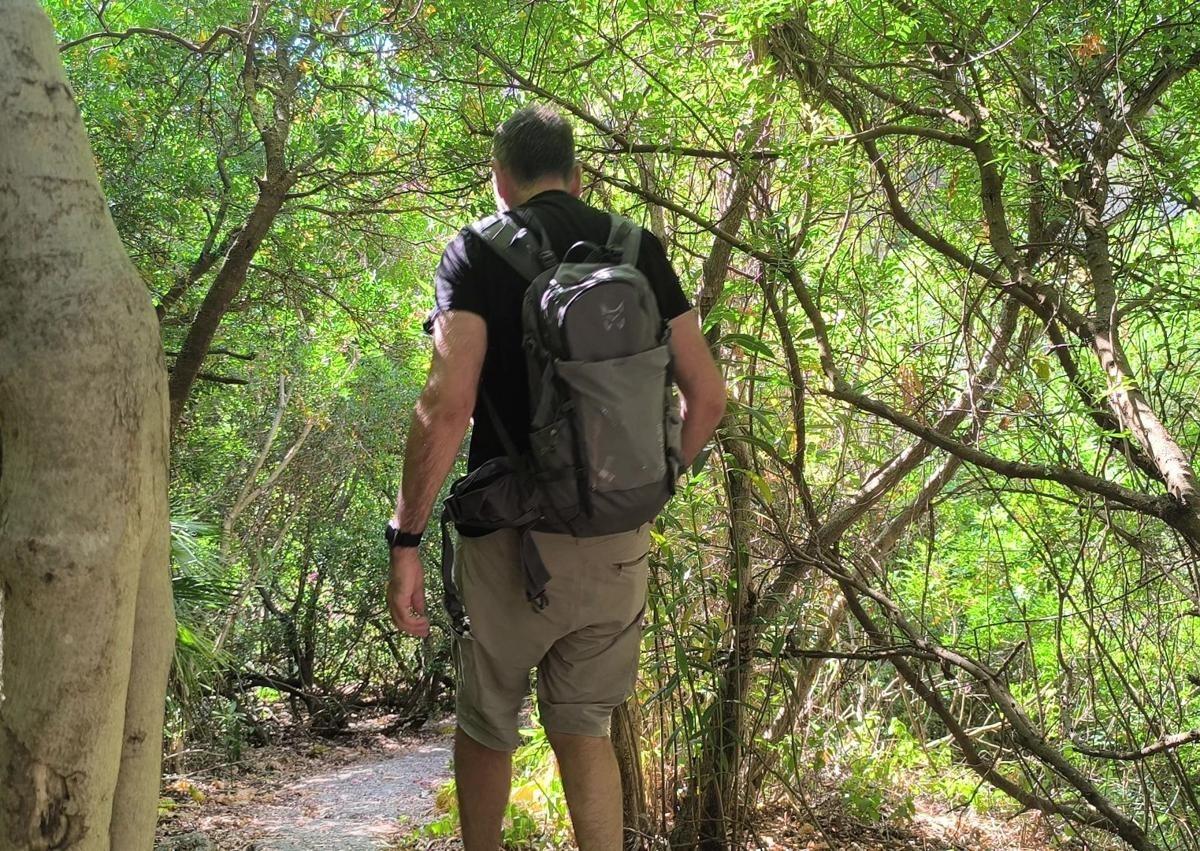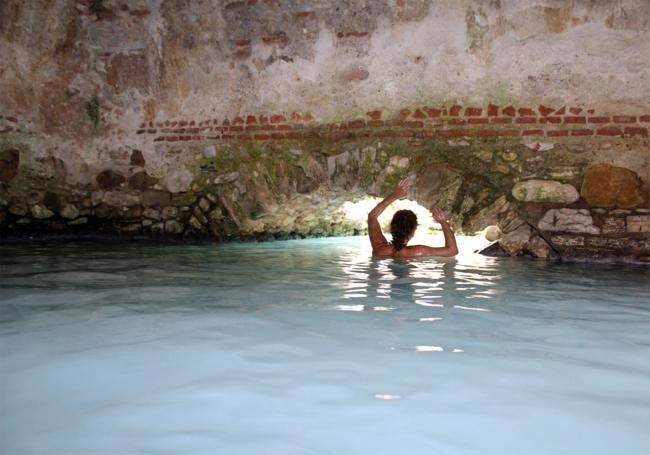A hike to the Costa del Sol through Europe's southernmost karst landscape that ends with a visit to a spa
Between July and November you can follow the spectacular trail in Casares that crosses the Canuto de la Utrera, a 'torcal' mountain range, ending up at the La Hedionda Roman baths
The eroded limestone rocks in this mountain range on the Costa del Sol are reminiscent of the Torcal de Antequera, but this is a karst of smaller dimensions, yet equally spectacular. The so-called Canuto de la Utrera, located in the municipality of Casares, is one of the most spectacular geological, ecological and even archaeological complexes in Malaga province.



This limestone formation, which dates back 200 million years, is especially concentrated in a narrow canyon between the steep walls of the Sierra de la Utrera mountain range. In this gorge you pass through a veritable rock forest, composed of karst rocks, alleys, passageways, sinkholes and towers. Added to this is the lush vegetation, in some places very dense, which not only provides shade, but also allows for stealthy walking, making it possible to spot some of the birds that fly over the area. Among them is the griffon vulture. Egyptian vultures stop here on their migratory routes and Bonelli's eagles have also been sighted. At the highest point, a mountain goat can occasionally be seen. These are just some of the attributes of this enclave, which has the honour of being the most southerly karst complex in Europe, given its proximity to the Strait of Gibraltar.
Today there is a linear trail that passes right through the Canuto de la Utrera. However, it can only be done between July and November, as the trail is restricted during the rest of the year due to nesting season for various birds in this valuable ecosystem.
This route is approximately three kilometres long and, except for a few sections that involve negotiating various slopes, it is relatively easy. However, it's best to do it in the early hours of the morning during the summer months to avoid the hottest part of the day. However, the dense vegetation of oleanders, carob trees and junipers, along with the shade provided by the high canyon walls, make the hike more bearable.
To get there, take the A-377 that connects the towns of Manilva and Gaucín. At kilometre 8, turn off onto a lane that leads off to the right. A few metres after the turning, you can park your car next to a sign explaining the area. From there you can see the Utrera mountain range, which already shows the rocky features that are so reminiscent of Antequera's El Torcal. You will have to go along a wide track for about a kilometre to reach the most breathtaking part, the Canuto de la Utrera itself. Along the way, you will pass by some farmhouses and orchards.
So, if the idea of doing this route is especially appealing to nature lovers, it gets so much better when you reach the end of the approved trail, as it leads to the Camino de los Baños, a path that takes you to just a few metres from the spa of La Hedionda, a sulphurous spring with beneficial properties for the skin and steeped in history. From the linear trail you will have to walk along this track for about 500 metres to get there. First, you will pass by the San Adolfo shrine and, shortly after, take a narrow path that leads to the Baños de la Hedionda.

This secluded spa, which can only be reached on foot via the Canuto de la Utrera, or from a designated car park approximately one kilometre away, is free of charge. However, during the summer season - this year from 28 June to 7 September - a reservation is required in advance if you plan to visit there between 12 noon and 7pm on weekdays and until 8pm if you go at the weekend. This is to avoid overcrowding at this site of great historical value. Bookings can be made online through a web link provided by Casares town hall.
However, if you go without a prior booking, there is another option with fewer restrictions in the middle of summer: Las Minas riverside beach, which is also in the municipality of Manilva. Just take the Camino de los Baños on the right hand side. The sulphurous waters of the same spring also reach there, although somewhat more diluted among those carried by Manilva river itself. At this spot there are sunshades and wooden benches for bathers, but it should be noted that it is located right under one of the AP-7's motorway viaducts, so there is some traffic noise.

-ktic--1200x840%40diario%20sur.jpg)
Comentar es una ventaja exclusiva para registrados
¿Ya eres registrado?
Inicia sesiónNecesitas ser suscriptor para poder responder.
Necesitas ser suscriptor para poder votar.